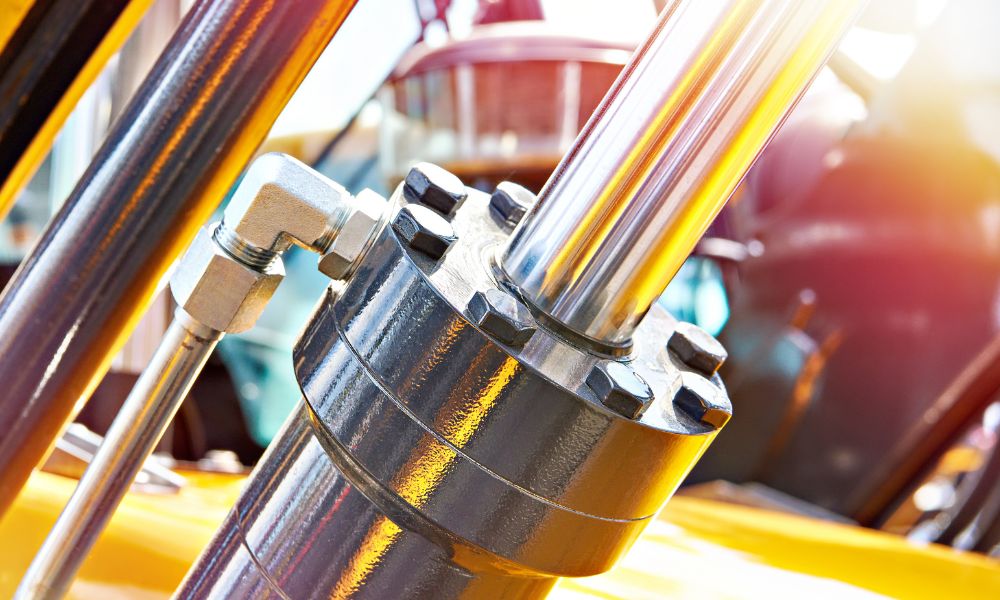The HPU hydraulic power unit stands as the beating heart of countless industrial systems worldwide, delivering consistent, reliable power that drives everything from massive manufacturing equipment to precision aerospace applications. These remarkable systems convert electrical energy into hydraulic force, creating the foundation upon which modern industry operates with unwavering efficiency.
Understanding the Fundamentals of Hydraulic Power
At its essence, an HPU hydraulic power unit is a self-contained system comprising several critical components working in harmony. The electric motor, pump, reservoir, control valves, and auxiliary elements come together to generate, direct, and manage hydraulic power. This orchestrated system creates pressurised fluid that flows through hydraulic circuits to actuators, where it transforms into mechanical force.
The beauty of hydraulic systems lies in their unparalleled power density. A relatively compact HPU can generate tremendous force, making it possible to lift enormous weights, apply precise pressure, or control complex movements with remarkable accuracy.
The Anatomy of Excellence: Key Components
Every HPU hydraulic power unit contains several essential components, each playing a vital role in the system’s overall performance:
Hydraulic Pump:
The heart of the system, converting mechanical energy from the motor into fluid energy
Electric Motor:
Provides the initial mechanical energy that drives the pump
Hydraulic Reservoir:
Stores the hydraulic fluid and assists with heat dissipation
Pressure Control Valves:
Regulate system pressure to ensure safe, efficient operation
Filtration System:
Removes contaminants that could damage sensitive components
Heat Exchanger:
Maintains optimal operating temperature for consistent performance
“The global HPU hydraulic power unit market is projected to reach £7.8 billion by 2027, growing at a CAGR of 5.3% from 2022, driven by increasing automation across manufacturing, construction, and aerospace sectors.” – Industrial Hydraulics Analysis Report 2022
Types of HPU Hydraulic Power Units: Finding Your Perfect Match
The diversity of HPU designs reflects their versatility across applications:
Fixed Displacement Units
These workhorses deliver a constant flow rate regardless of pressure demands. Their simplicity makes them cost-effective and reliable for applications with steady flow requirements.
Variable Displacement Units
By adjusting pump output according to system demands, these sophisticated units optimise energy consumption and reduce heat generation. Though more complex, they offer superior efficiency for systems with fluctuating requirements.
Electric vs. Diesel-Powered Units
While electric HPUs dominate in factory settings, diesel-powered alternatives serve admirably in remote locations or mobile applications where electrical infrastructure is unavailable.
Compact vs. Industrial-Scale Units
From portable units that power single machines to massive industrial systems driving entire manufacturing plants, HPUs scale remarkably well across applications.
Critical Performance Parameters: The Metrics That Matter
Understanding the technical specifications of HPU hydraulic power units reveals why selecting the right one is crucial for operational success.
Flow Rate
Measured in litres per minute (LPM), the flow rate determines how quickly the system can move hydraulic fluid and, consequently, how rapidly actuators can operate.
Pressure Rating
The maximum system pressure, typically measured in bar or PSI, defines the force-generating capability of the hydraulic system. Higher pressure ratings enable greater force but require more robust components.
Reservoir Capacity
The volume of hydraulic fluid the system can hold affects heat dissipation, system response, and operational duration. Properly sized reservoirs prevent overheating and ensure consistent performance.
Power Requirements
The electrical or fuel consumption of an HPU directly impacts operational costs. Modern units increasingly emphasise efficiency without sacrificing performance.
Revolutionary Applications Across Industries
The versatility of HPU hydraulic power units has made them indispensable across numerous sectors:
Manufacturing Excellence
From metal-forming presses to injection moulding machines, HPUs provide the controlled power that makes modern manufacturing possible. Their ability to maintain precise pressure and flow characteristics enables the creation of components with exacting tolerances.
Construction and Infrastructure
Bridge lifting systems, tunnel boring machines, and concrete pumping operations all rely on robust HPU hydraulic power units. Their reliability under harsh conditions makes them ideal for demanding construction applications.
Aerospace and Defence
The aerospace industry demands nothing less than perfection, which is why HPU hydraulic power units feature prominently in aircraft manufacturing, testing, and maintenance equipment. Their precise control capabilities allow for the exacting standards required in this sector.
Marine Applications
Ships and offshore platforms utilise HPUs for steering systems, winches, stabilisers, and numerous other critical functions where reliability amid challenging conditions is non-negotiable.
The Future: Innovation and Sustainability
As industries worldwide embrace sustainability and digital transformation, HPU technology is evolving to meet new challenges:
- Energy-efficient designs that reduce power consumption and operational costs
- Smart monitoring systems that predict maintenance needs before failures occur
- Integration with IoT networks for remote operation and real-time analytics
- Environmentally friendly hydraulic fluids that minimise ecological impact
- Noise reduction technologies that improve workplace conditions
“Next-generation HPU hydraulic power units incorporating predictive maintenance algorithms can reduce unplanned downtime by up to 70% while extending overall system lifespan by 25-40%.” – Global Hydraulics Institute
Maintenance Best Practices: Ensuring Longevity
The reliability of HPU hydraulic power units depends significantly on proper maintenance:
- Regular fluid analysis to detect contamination and degradation
- Systematic filter replacement to protect sensitive components
- Temperature monitoring to prevent overheating
- Inspection of seals and fittings to prevent leaks
- Verification of electrical connections and controls
Selection Criteria: Making the Optimal Choice
When selecting an HPU hydraulic power unit, engineers must carefully evaluate:
- Required flow rate and pressure for the specific application
- Duty cycle and expected operational duration
- Environmental conditions, including temperature extremes
- Space constraints and installation requirements
- Total cost of ownership, including energy consumption
- Noise limitations and regulatory compliance needs
Conclusion: Powering Tomorrow’s Innovations
As we look to the future, the continual refinement of hydraulic technology promises even greater efficiency, control, and integration with digital systems. From manufacturing facilities to construction sites, these powerful systems will continue to evolve, adapting to new challenges and opportunities in our increasingly complex industrial landscape. Whether driving massive equipment or providing precise control in delicate operations, the fundamental principles that make hydraulic systems so valuable remain unchanged—a testament to the enduring excellence of the HPU hydraulic power unit.






